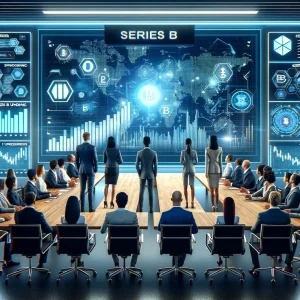School closures brought about by COVID-19 and education unpreparedness have brought a heartbreaking truth to everyone’s attention: children, although thought to be immune from the virus for some reason, are suffering as the collateral damage of every government’s unpreparedness.

These nationwide closures are impacting over 72% of the world’s student population. Several other countries have implemented localized closures impacting millions of additional learners. Take a look at these figures from UNESCO (United Nations Educational, Scientific and Cultural Organization): 1,268,164,088 affected learners, 72.4% of total enrolled learners, 177 country-wide closures.
This is UNESCO’s assessment of the situation:
School closures carry high social and economic costs for people across communities. Their impact, however, is particularly severe for the most vulnerable and marginalized boys and girls and their families. The resulting disruptions exacerbate already existing disparities within the education system but also in other aspects of their lives.
The bright side of COVID-19 and education
There’s a good side to it though, as parents are given a close-up view of their children’s need for one-on-one instruction. Will parents be up to the task or are they more focused on getting something on the table, not education? Let’s take a look at one child in a huddle with her dad, sometime in the future.
“Dear Diary
Saanvi’s new school routine 4.0
It is so funny to watch my father struggling with my algebra, trying to work these sums out on his hand or on a piece of paper. He just doesn’t get it with online learning and how Khan Academy works is completely beyond him 🙂
He really is finding it challenging
But I must say has improved over the last 3 weeks. Ha ha.
It is funny to overhear the Zoom conversations between the other kids’ parents and my teacher, and the questions that each of the parents are asking.
They really are struggling with this new normal of homeschooling.
I hear the other parents say things like this
“My boy is just not interested. We are battling to get him to sit and stop playing. He just isn’t in that frame of mind. That is my biggest challenge at the moment”
“I don’t understand the complexities of digital learning and I feel like I’m learning more from my children than the other way round.”
“The way in which I did algebra was very different because they’re using a lot of technology and we used to do handwriting and calculating in our books.”
Routine, routine, routine, routine. Children must have a routine is what teacher says to our parents. “
But homeschooling is not school at home.
Students do not need to spend eight hours in “school”
Having a consistent routine is necessary, but many factors can make this a challenge
- Not having access to the proper technology
- Busy parents working from home
- Sick family members
And other circumstances that make it almost impossible to implement a traditional school schedule at home.
To learn something new, we need to “unlearn” something old. Our core belief and the traditional institutions that are part of our DNA need to be “unlearned”. A virtual program and a traditional one are completely different.
The structure and pace of a traditional school day are very different at home.
Of the 8 hours a student spends at school, many hours are “lost” doing things that fill time – recess time, time lost while walking to different classrooms, talking to classmates, assembly, and many other things that do not happen at home.
How much time should be spent studying at home?
Psychiatrist Colette Poole-Boykin suggests this formula to determine how much time a child should spend on a task. Multiply the child’s age by 2 to 5 minutes, and the result approximates the amount of time the child can stay focused.
If we apply this rule, Dr. Poole-Boykin suggests that elementary school students should spend from one to two hours a day learning, high school students two to three hours, and college students three to four hours a day as a maximum.
The dark side of online education
A quote by Desiderius Erasmus: “In the land of the blind, the one-eyed man is king” highlights the fact that a person with limited abilities or opportunities is dominant over and considered special by, those who have even fewer abilities and opportunities.
The immediate onset of online education has unmasked the socio-economic inequality experienced by millions of families – a stark reminder of COVID-19 and education disaster.
Many students and their “parent-teachers” do not have the technology, time-space, or satisfactory environment at home for learning.
In addition to these barriers, a less than ideal situation of fear and anguish exist because many parents are unemployed, or food is in short supply, creating other more pressing challenges. In many neighborhoods, the sick and dying contribute to fear. Just another sidelight of COVID-19 and education.
Communication crucial for solving challenges
We also have a mismatch between parents’ expectations and their child’s performance, and an understanding of the correct balance between discipline and creating a safe, loving home environment is a delicate and challenging task.
Faced with all these daily changes that students and parents are experiencing worldwide, communication becomes ever more crucial for solving these challenges.
With over 50% of online resources being in English, a key component of global strategy in assisting the classrooms of the future to triumph is developing tools that speed up the learning process of English as a vital skill, which will allow students to access the resources available to them.
UNESCO projects only the tip of the iceberg:
Demand for distance learning skyrockets when schools close and often overwhelm existing portals to remote education. Moving learning from classrooms to homes at scale and in a hurry presents enormous challenges, both human and technical.
In rural areas of most countries, the situation is more crucial. When schools shut down, early marriages increase, more children are recruited into militias, sexual exploitation of girls and young women rises. Furthermore, reports of teenage pregnancies become more common, and child labor grows.
Simple, easily accessible, cost-effective education for all. Let’s talk about a feasible solution.





